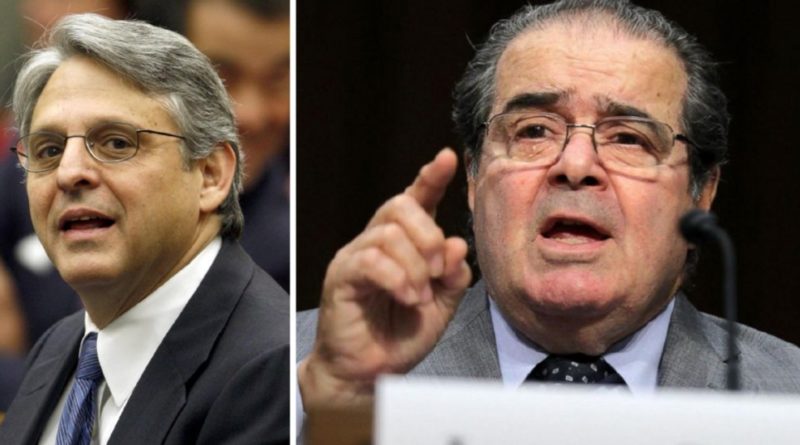Scalia’s Vacant Seat – What’s Next for SCOTUS
2016 will be known in the history books for two things: the craziest presidential election in recent time and the year of the grim reaper. This year, Americans have mourned the death of Gene Wilder, Prince, David Bowie, Muhammad Ali, and Supreme Court Justice Antonin Scalia. While the aforementioned people have no doubt left their mark in history, the death of Justice Scalia has caused turmoil both in and outside of the beltway. Scalia’s absence on the Supreme Court has caused concern for both parties.
According to Article II of the Constitution, the president nominates justices to the Supreme Court, with the “advice and consent of the Senate.” Due to the timing of Scalia’s passing (READ: election year), Obama would have an easier time getting ISIS to surrender than trying to appoint a new Supreme Court Justice. Nonetheless, Obama rose to the task and on March 16, he appointed Merrick Garland, the chief judge of the Court of Appeals for the D.C. Circuit. Garland’s appointment launched a constitutional showdown after Senate Republicans refused to hold hearings.
Fast forward seven months and Obama is waiting to find out if Republican Senators are going to swipe right on Merrick Garland’s judicial appointment. However, Senate Republican leaders are telling Garland, you can’t sit with us, even if Hillary wins in November. There is little question, Republicans are playing hard ball with the Supreme Court nomination and rolling the dice in refusing to confirm Garland, which leaves the door open for a potentially more progressive nominee if Hillary wins, swinging the court to the liberal end of the spectrum.
Given the strife between the Legislative and Executive branches, it comes as no shock that Republican leaders in the Senate are willing to risk blocking Obama from leaving his mark on the Judicial branch three times over.
During Obama’s presidency, he nominated two justices, Sonia Sotomayor, the first Hispanic justice, and Elena Kagan, his former solicitor general, to the Supremes with little strife. Some argue that the timing of Garland’s appointment is different, because it’s an election year, but, according to history, this is not a new phenomenon. Since 1900, six justices have been confirmed in an election year by presidents who were not running for reelection.
Historically speaking, Garland’s appointment is not an outlier. In fact, Garland’s nomination is nothing short of routine procedure, according to the Founding Fathers, minus the fact that Garland has been waiting over 180 days for his day in the Senate. Meanwhile, Republican Senate leaders are allowing the fervor and potential Trump presidency to cloud their ability to give Garland a chance. The stall tactic, employed by Republicans to avoid nominating a justice to the Supremes until after the election, is not only adding to the optics of a do-nothing Congress, it’s also hurting the GOP’s chance at maintaining control of both the Senate and the House.
The legacy of Scalia has become shrouded by the frenzy swirling around Garland’s appointment as a result of neither Obama nor Senate Republicans being willing to change course. The race to restore the Supreme Court back to nine justices will, no doubt, fall to the wayside until after November.
Republican leaders are proving to be more rigid in their convictions than Justice Scalia, for a man who believed his Constitution to be a flexible one, was in his dissenting opinions, and, at the end of the day, the strongest branch in America’s government is slowly becoming weaker at the hand of the legislative branch.
Originally written for and published on Political Storm.

